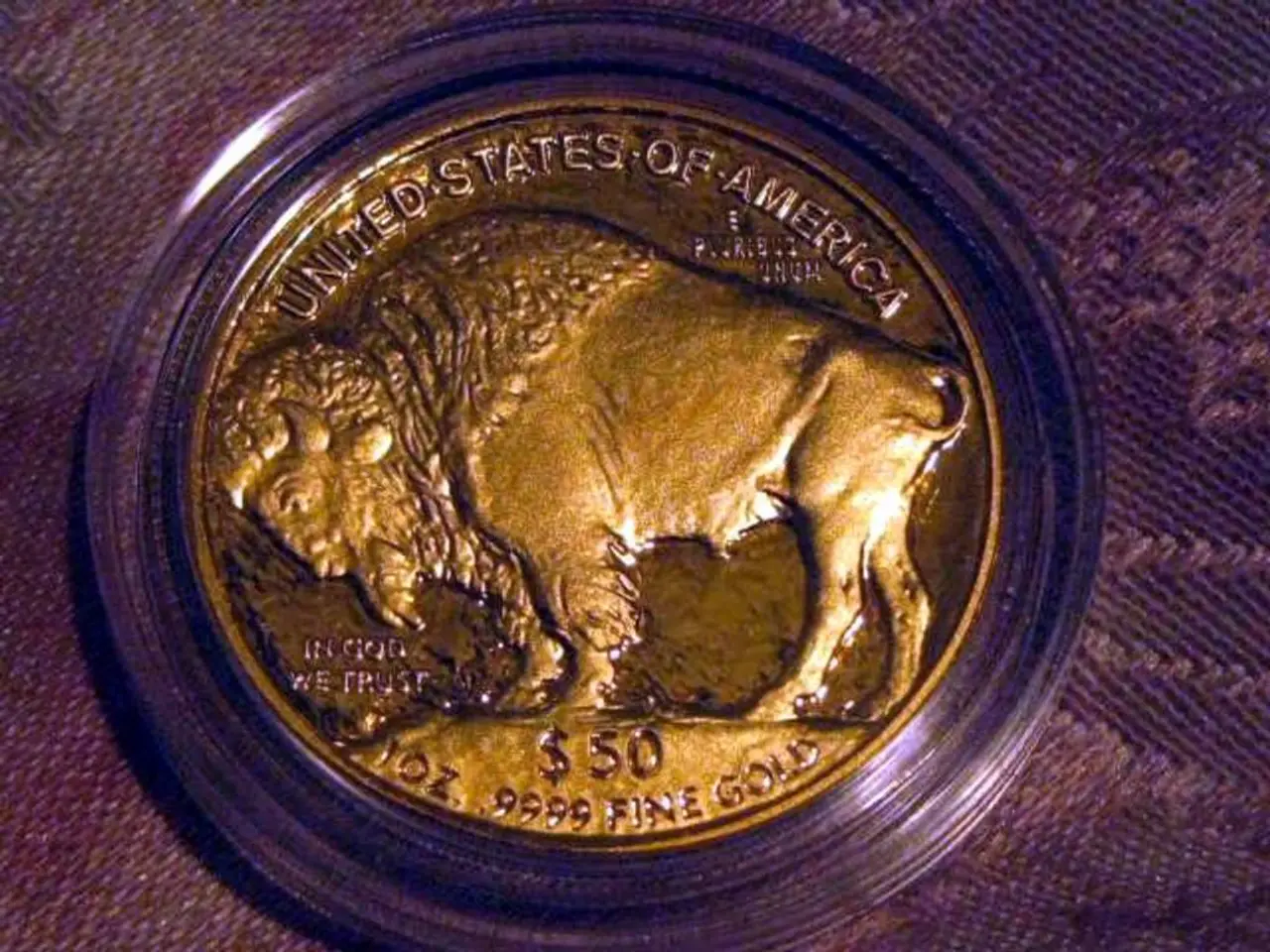U.S. Federal Reserve maintains firm stance, causing gold prices to decrease this week
In the global market, gold prices have remained below their inflation-adjusted 2011 highs, while the price of 24-carat gold in India has shown some fluctuations this week. According to Jateen Trivedi from LKP Securities, the price of 24-carat gold (10 gram) started at Rs 98,446 on Monday and ended the week at Rs 98,534. However, the price was weaker at Rs 97,700 in MCX this week, and it peaked at Rs 99,017 on Wednesday.
The divergence between gold and silver prices presents an opportunity for investors, as gold prices in Comex hovered near $3290 this week. The gold market, valued at $23 trillion, with 15% held in India, continues to attract attention due to its volatility and potential as a safe-haven asset.
The volatility of gold prices in India is influenced by a combination of international and domestic factors. These factors also affect the Indian Rupee (INR) due to their economic interlinkages.
International Factors: - The value of the INR against the US dollar plays a critical role since gold is globally priced in dollars. A weaker rupee makes gold imports costlier, pushing domestic prices up. - Changes in US interest rates, inflation expectations, and geopolitical risks can increase gold’s appeal as a safe-haven asset, driving prices up worldwide and consequently in India. - International trade tensions and tariffs, such as those imposed by the US on multiple countries, add to price volatility by impacting global market dynamics.
Domestic Factors: - India levies import duties (around 6%) and sales taxes (around 3%) on gold, directly affecting the final retail price. Changes or expectations of changes in these taxes can lead to price fluctuations. - A depreciating INR against the US dollar increases the cost of imported gold, causing prices to rise. - Cultural and seasonal demand, such as festivals and wedding seasons, traditionally boost gold buying in India, impacting demand and price fluctuations. - High gold prices have recently dampened consumer demand, with retailers offering discounts and jewelry manufacturers scaling back production due to reduced orders.
The impact of gold price volatility on the Indian Rupee is significant. Since India is the world’s second-largest gold consumer and heavily relies on imports, rising gold prices tend to increase import bills, putting pressure on the trade deficit. This can contribute to the weakening of the INR. A weaker rupee makes gold imports more expensive, further pushing gold prices higher, creating a feedback loop between gold prices and INR valuation.
Volatility in gold prices can cause uncertainty in capital flows, as investors might shift funds between gold and currency markets, influencing INR stability indirectly. Over the past month, the INR has weakened 1.88%, and the USD/INR exchange rate fell to 87.19 on Saturday.
Analysts expect gold to remain volatile within the range of Rs 97,000 to Rs 98,500 in the near future. The sentiment for safe-haven assets has been dampened due to the U.S. Fed's continued hawkish stance and no indication of near-term rate cuts. However, a 5% shift of global reserves into gold could trigger a sustained and significant rally in its price.
[1] https://www.livemint.com/money/personal-finance/gold-price-in-india-today-gold-price-today-2023-03-31 [2] https://www.reuters.com/business/india-economy/indias-gold-imports-plunge-60-q4-2023-02-03/ [3] https://www.bloombergquint.com/onweb/gold-prices-in-india-rise-on-rupee-weakness-and-higher-import-duties [4] https://www.financialexpress.com/economy/gold-prices-in-india-fall-after-us-fed-signals-rate-hikes-in-2023-20230328 [5] https://www.thehindubusinessline.com/markets/gold-prices-in-india-rise-on-rupee-weakness-and-higher-import-duties/article33492150.ece
- Given the fluctuating price of 24-carat gold in India and the volatility in the gold market, some investors may find investing in real-estate as a more stable option for their finance portfolio.
- In spite of the anticipated volatility in gold prices, the potential for a 5% shift of global reserves into gold could significantly impact the finance market, potentially leading to a rally in real-estate prices as well.




